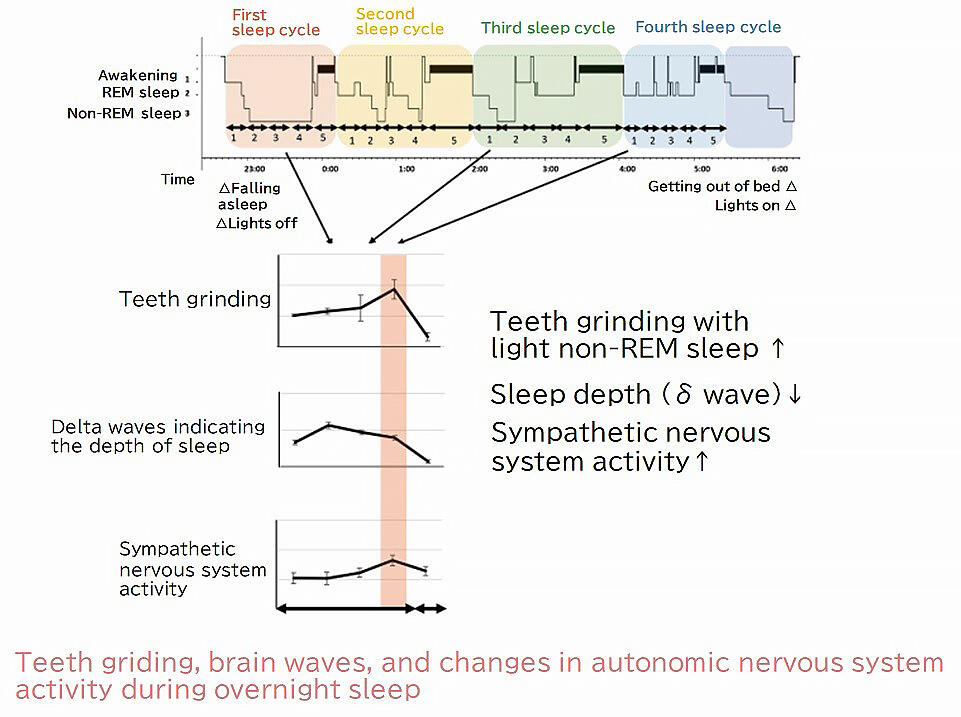Teeth grinding is not just a habit but a type of abnormal phenomenon during sleep. It is very common in children, with a peak incidence around the age of 6 years. It was difficult to obtain research cooperation from children for night recording; hence, until now, the detailed mechanism remained unclear, and the development of appropriate diagnosis and treatment has not been established.
A research group led by Professor Takafumi Kato of Osaka University has set up a dedicated sleep laboratory and investigated teeth grinding in 44 children aged between 6 - 15 years during sleep. Teeth grinding was confirmed in 15 subjects, which was 27.3% of the total children. A comparison of brain waves, heartbeats, and body movements of these 15 children was made with children not exhibiting any teeth grinding behavior. First, two groups showed no difference in sleep structure such as the time in REM sleep and non-REM sleep.
Meanwhile, it was confirmed that teeth grinding occurred frequently during non-REM sleep just before the transition to REM sleep. Additionally, the brain waves of children who grind their teeth were found to have high activity of beta waves, which were indicators of the arousals in their brain; approximately 90% of teeth grinding occurs with turning over and brief awakenings.
These results indicate that teeth grinding in children is caused by hypersensitive reactions of the jaw neural mechanism due to changes in brain activity during the transition from non-REM sleep to REM sleep. In the future, further knowledge on the mechanism of teeth griding is expected, and diagnostic and treatment methods will be established.





